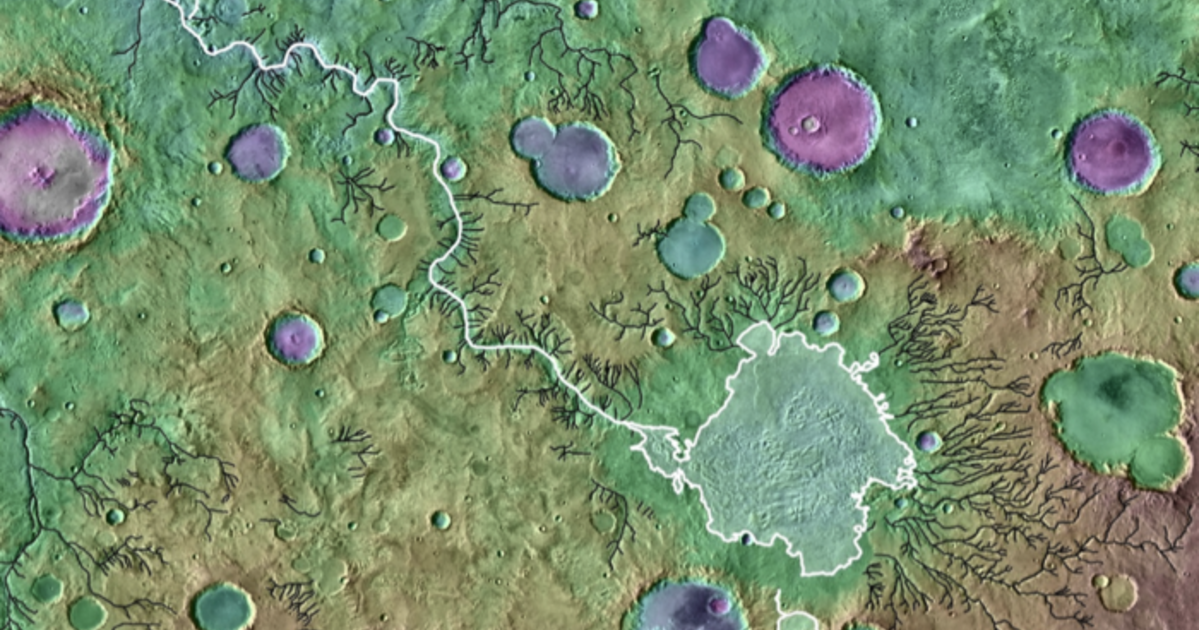The river valleys on Earth were born after years of erosion over millions of years. According to a new study, all this happened faster on Mars, where lakes formed from the pooling of water in the planet’s craters that penetrate their dams and form the surface of our neighbor with them.
a Published by Nature magazine On September 29, researchers at the University of Texas at Austin worked. According to the study, in the case of Mars 3.5-3.7 billion years ago, when its surface was still wet, the planet’s cartridges were home to ocean-sized lakes. As long as the walls of the crater can withstand water pressure, the researchers said that in 262 cases a small amount of water erupted that could fill Lake Ontario and Lake Upper, dramatically reshaping the surface of Mars. The study It also risks periods in Martian history when the Martian surface was abundant in river waters leading to the formation of life. (About this period worth This is amazing Read the article.)
Photo: NASA/GSFC/JPL ASU
A study published in 2020 previously hypothesized that the valleys of Mars were dug up by glaciers 3.8 billion years ago, but the study’s lead author, Anna Grau Gallover, also noted that based on the Red Planet’s varied surface information, not only ice but many other processes contributed Also in the composition of the surface. One of these processes may be floods, which played a role in the formation of valley systems on the planet and the formation of highlands in the southern hemisphere.
recent study Authors The results of laser altimeter measurements from the Mars Global Surveyor spacecraft, which disappeared in 2006, and data from the Mars Odyssey orbiter THEMIS, launched in 2001, were used to determine the mineral distribution, to identify floodplain valley systems. Narrow valleys less than 3.5 billion years old and those extending higher than the 30th latitude were excluded from the search, as the latter may have been reshaped by ice. Thus, 262 outlet channels and lake basins were finally found and examined.
It turns out that massive floods were not frequent, making up only three percent of the valley systems on Mars that formed in this way. But streams of sediment and water from glaciers have drilled deeper, accounting for 24 percent of the total volume of river valleys on Mars. According to the data of the probe, the depth of the valleys of Mars is generally 77.5 meters, while the depth of the bottom of the canyons excavated by floods is 170 meters above the surface.
Despite the speed of the flood waves geographically, they had a lasting effect on the surrounding landscape; For example, according to the authors of the study, they may have influenced the direction of formation of nearby river valleys. At the same time, the research offers an alternative explanation for the evolution of the topographic features of Mars, which were previously explained by shorter moisture periods and climate change.
In addition, the authors note how different the composition of Mars and the Earth’s surface is, since previous craters and traces on our planet almost disappeared, while on Mars this did not happen.
























![Does the Nintendo Switch 2 not even reach Steam Deck's performance? [VIDEO]](https://thegeek.hu/wp-content/uploads/sites/2/2023/06/thegeek-nintendo-switch-2-unofficial.jpg)



















